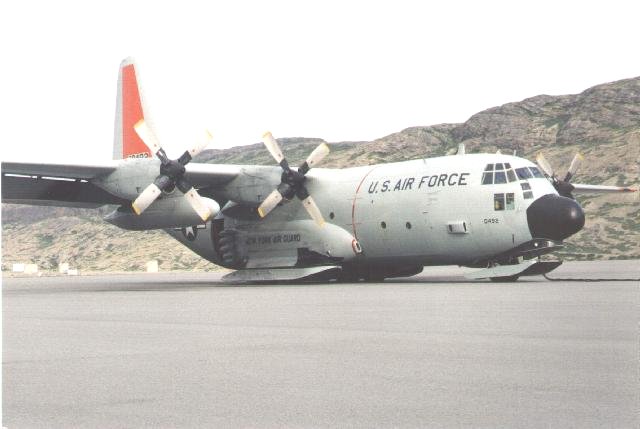The major weakness in the US military's ability to rapidly deploy
forces is a dependence on large, modern airfields. Most areas of the world have few suitable
runways and a smart enemy may employ missiles, artillery, or mortars to make them unusable.
Seaplanes that can operate from airfields, rivers, lakes, and oceans are the solution.
The C-130 design already has high wings, and large modern seaplanes are currently in
operation, like the
Canadair CL-415 and Japanese Shinmaywa US-1A. (below)![[US-1A]](umiaa.gif)
Lockheed-Martin developed a "floatplane" conversion kit that allows a C-130 Hercules to operate from water. This floatplane has two major disadvantages compared to seaplanes. First, the weight and drag of the large floats cuts payload and range by 30%. In addition, it takes several hours to mount these on a C-130. A lack of enthusiasm from the Marines and Air Force discouraged the development of a CL-130 seaplane, which may require moving the engines on top of the wings, and a watertight fuselage with a floats and skirts attached to the rear ramp so it can open on the water. Lockheed-Martin designed a CL-130 on paper several years ago, but couldn't find buyers. This is not a radical idea, LC-130 Ski planes have operated from ice for years. (below)

Seaplanes can also provide unique support for nuclear submarines. While nuclear subs can operate without refueling for years, submariners need fresh food, mail, and other supplies every few weeks. During a war, a visit from a tender or a port visit makes them very vulnerable to detection and attack. However, an early morning rendezvous with a seaplane in the middle of nowhere can provide the supplies they need in just one hour.
The US Navy used seaplanes extensively during World War II, mostly for reconnaissance and sea rescue. Their bases were often hidden in island coves to protect them from Japanese attack. It is impossible to hide a large runway needed for C-130s, and impossible to bomb and damage a seaplane's "runway." Seaplanes also supported units in combat. Just four hours after US Marines landed on Iwo Jima in 1945, a Navy seaplane landed near the beachhead during fighting to drop off supplies and pick up wounded.
Keep in mind that modern seaplanes have wheeled landing gear to operate from regular airbases as well. Current C-130s can operate from less than 0.0001% of our planet, while seaplanes can operate from 70%. The Marine Corps should be enthusiastic about this idea, especially after "CL-130 Amphibians" by Carlton W. Meyer appeared in the May 1997 issue of the Marine Corps Gazette, and a supportive article by Marine Lt. Col. Greg Baur appeared in the May 2000. While Marines tout the ability of the V-22, they should note that CL-130s can carry four times more cargo ten times the distance. The USAF and Marines are already buying new C-130Js each year; a few million dollars in development funding will allow CL-130Js to be purchased instead. The US Coast Guard and many foreign nations will buy CL-130s; Japan already plans to replace its US-1As.
©2015 www.G2mil.com